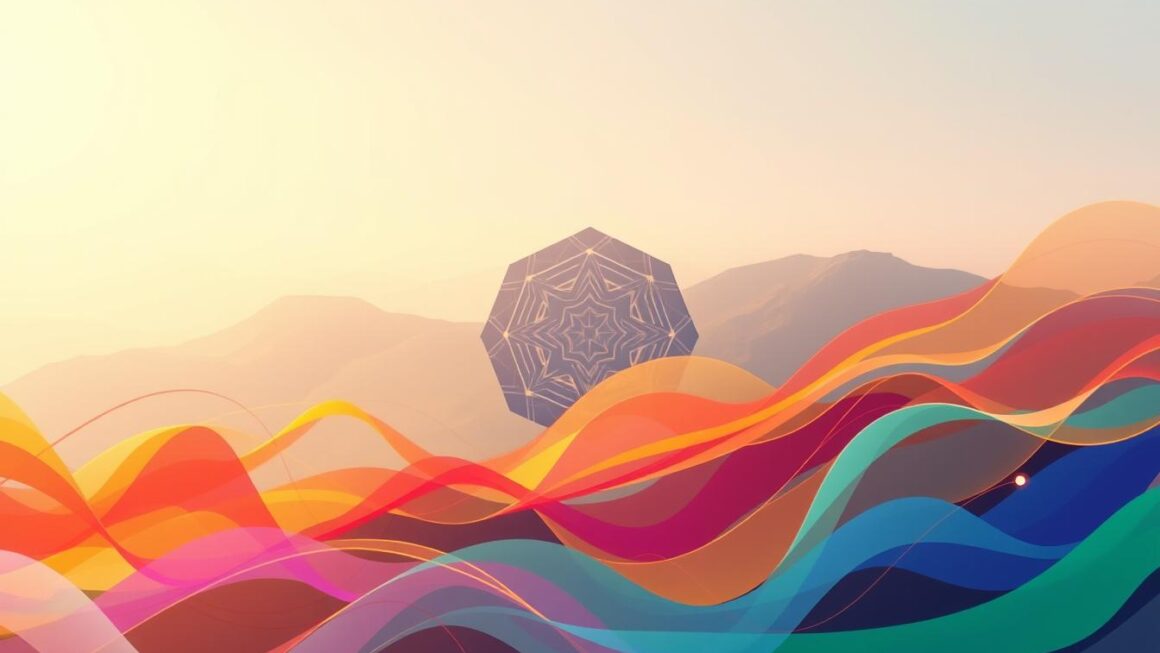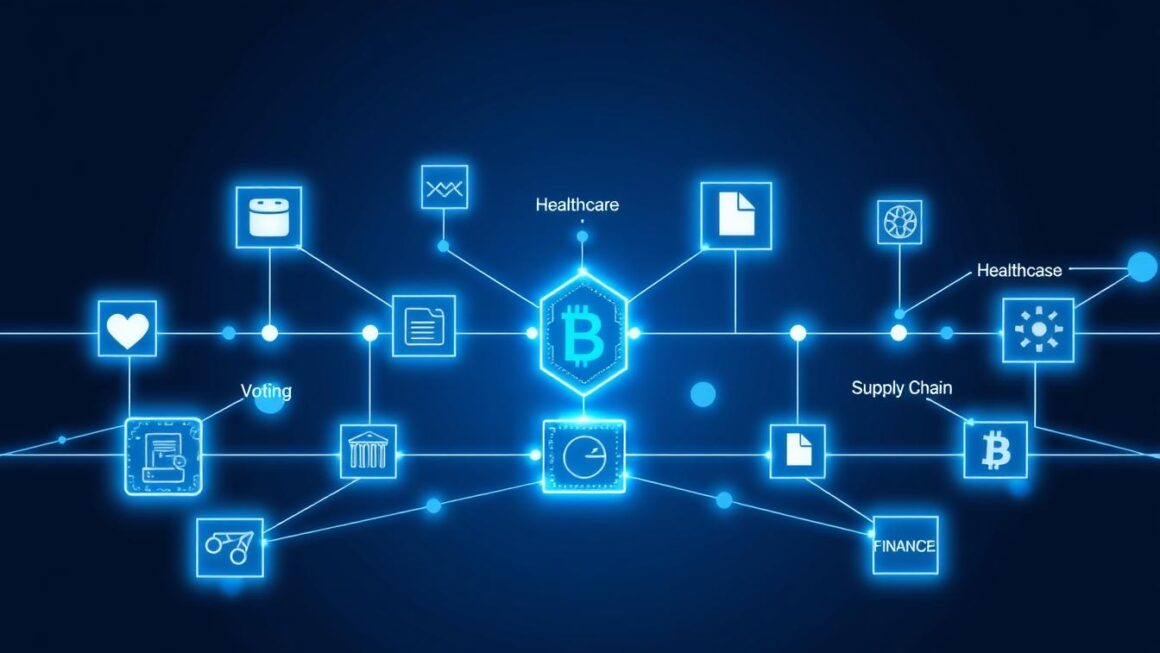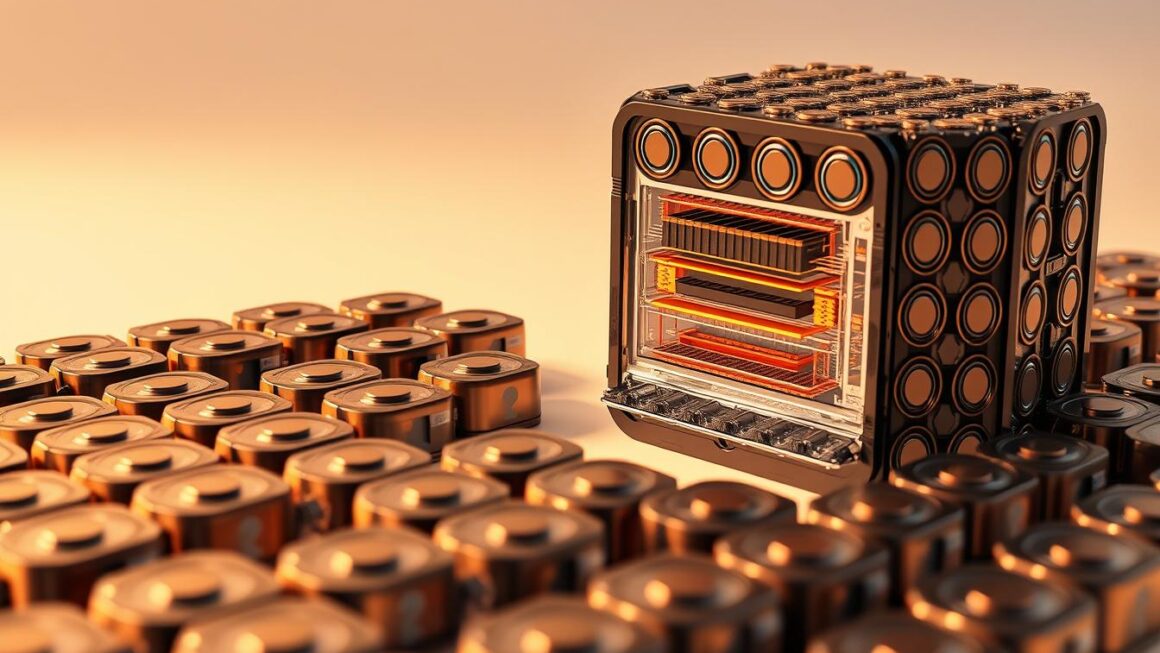The rise of AI-generated art has started a big debate. It questions the real impact on creativity and artistic integrity. Tools like OpenAI’s Ghibli filters make it hard to tell human from machine art.
This blurring of lines threatens the unique feelings that art brings. Artists’ styles are being used without permission, raising big concerns about digital art rights. This could make all art seem the same, just for trends.
Big names like Studio Ghibli’s Hayao Miyazaki have spoken out against AI art. They see it as a threat to human creativity. They want us to think more about our role in the art world.
There are also worries about how AI uses our data and its big carbon footprint. Artists and tech people are facing big challenges. The future of art is uncertain, but we must fight to keep its true value123.
Key Takeaways
- AI-generated art raises significant ethical questions about authenticity and creativity.
- The homogenization of artistic styles threatens the diversity of artistic expression.
- Concerns over digital art intellectual property highlight the need for stronger copyright protections.
- The environmental impact of AI technologies necessitates urgent discussions about sustainability.
- Artists are increasingly advocating for their rights amidst the rise of AI art creation.
The Emergence of AI Art in the Creative Landscape
AI-generated art has changed how we make art. Tools like DALL-E and MidJourney are now popular. They help artists work better. But, they also make us wonder about who owns the art and if it’s real.
In 2023, AI art sold for $432,500. This shows how big AI art is getting in the art world4.
This new technology changes how we create art. But, it also brings problems. There are more fights over who owns the art. Artists are upset because their work is used to train AI without permission5.
People also worry if AI art is real. Studies say artists can tell if art is made by AI 83% of the time. AI tools can do even better, with 98% accuracy5. There’s a big debate about who owns AI art4.
AI art is both good and bad. It opens up new ways to be creative. But, it also makes us think about the importance of human touch in art. Some worry that AI might replace certain types of art. This makes us question the future of art made by humans1.
Understanding AI-generated Art
AI-generated art changes how we make art, using Generative AI and Machine Learning. It creates new works by learning from lots of images. Critics say there are big questions about who owns this art6.
Some see Generative AI as a way to help human creativity. But others worry it might make human art less valuable6. They think AI art lacks the real feelings and depth that humans bring to their work6.
The debate about AI art has made people think differently about what art is and who makes it7. People often prefer art made by humans because of its unique qualities7. This change also affects how we teach art, making some worry about losing the personal touch in art7.
AI Art Ethics: Exploring the Complex Dilemmas
The world of AI-generated art is filled with complex issues. These include copyright infringement and data exploitation. Many AI models use copyrighted works without permission, taking away from artists’ rights. This is a big problem for protecting intellectual property.
In 2022, a controversy happened at the Colorado State Fair. Jason M. Allen won a competition with an AI art piece called “Théâtre D’opéra Spatial.” Many human artists felt cheated, sparking outrage1.
The Implications of Copyright Violations
Copyright violations affect more than just individual artists. Over 400 celebrities and entertainment leaders signed a letter against weakening copyright laws for AI2. They argue for strong copyright laws to protect art and the creative economy.
The creative economy adds over $229 billion in wages and supports 2.3 million jobs3. Without strong laws, artists could lose their jobs and see their work devalued.
Case Studies in Data Exploitation
Artists face challenges as they deal with data exploitation. Lawsuits have started against companies like Midjourney and Stable Diffusion for using art without permission1. Tools like Nightshade and Glaze help artists protect their work.
These tools add “noise” to images, making it hard for AI to learn from them. This helps keep the original art safe1.
The Threat to Creativity: Human vs. Machine
The rise of AI-generated art is a big threat to creativity. It challenges the unique touch that humans bring to their work. Machines now do tasks that artists used to do, making art seem less special. This is because AI is trained on lots of art without permission, changing what creativity means8.
Creating AI art based on famous movies like Ghibli is seen as wrong. It hurts the careers and money of real artists8.
Many artists worry about AI’s impact on their work. They fear losing their unique style and voice in art9. Using AI too much might make art less personal and less meaningful. It could even stop artists from growing and improving6.
Also, people say AI art doesn’t feel real. It misses the emotional depth that humans add to their work6.
Ghibli Copyright Infringement: A Case of Style Mimicry

AI technologies have raised concerns about Ghibli copyright issues. These systems can copy Studio Ghibli’s iconic style. This brings up questions about *artistic originality* and AI developers’ ethical duties.
AI-generated content is becoming more common. This shows the impact of style mimicry. When AI copies Ghibli’s style without permission, it harms creators. Over 400 celebrities and executives have spoken out against AI companies using copyrighted content without asking, showing how urgent this problem is2.
The entertainment industry, which supports 2.3 million jobs and pays $229 billion a year, is at risk. Weakened copyright protections threaten its economic base and the value of *artistic originality*. It’s vital to protect creators’ rights to keep the creative world vibrant and true to its artistry.
The Impact of Style Replication on Original Creators
As AI grows, the line between innovation and respecting *artistic originality* gets blurred. Trying to copy styles affects big brands like Studio Ghibli. Creators worry about losing their unique touch and artistic legacies.
Without proper safeguards and copyright respect, art might lose its unique touch, becoming indistinguishable from AI-made copies.
The mix of technology and creativity needs strong talks about ownership and artistic respect. The battle against copyright infringement is key to protecting creators’ legacies against AI’s rise23.
Eco Costs of AI Art Generation
AI art has brought up important questions about eco costs in the creative world. Training AI models needs a lot of data processing, which affects the environment. It’s key to understand how much energy these technologies use to judge their greenness.
Environmental Impact of Training AI Models
The effect of training AI models on the environment is huge. These tasks need lots of computer power, leading to more carbon emissions. As we use AI more, we must quickly think about its impact on the planet.
Studies show a link between the energy used in training and the carbon left behind. This shows we need to be careful in the AI world.
Energy Consumption and Sustainability Challenges
AI art generation faces a big challenge: energy use. The need for strong computers means a lot of energy is used, which is bad for the planet. Companies are looking into using cleaner energy to lessen their harm to the environment.
It’s vital to deal with the eco costs of AI art to keep innovation and protect the planet in balance.
Centralized Power: The Role of Tech Giants

Big tech companies like OpenAI and Meta have changed AI art a lot. OpenAI’s new tool lets users make images like Studio Ghibli’s. But, this raises big questions about who owns the rights to these images10.
This issue shows how tech can affect art’s true meaning. It’s hard for solo artists to get noticed when big companies control the market10.
OpenAI had to limit its tool because so many people wanted to use it. This shows how much control tech giants have over art10. Runway, backed by Google and NVIDIA, focuses more on AI than traditional art11.
Legal experts worry about licensing and consent issues. They question if OpenAI used Studio Ghibli’s work without permission10.
Karla Ortiz says OpenAI is making money off famous artworks without paying the artists10. This control hurts art’s diversity and limits new artists’ chances. It looks like art might soon be all about making money, not creativity.
The Dependency on AI Tools in Artistic Creation
The dependence on AI tools is changing how art is made, leading to both new ideas and worries. Artists now use advanced tech, like in generative art, to create. Tools like Nightshade, from the University of Chicago, help artists control AI, keeping their work unique and adding to creativity1. But, this shift makes some wonder if traditional skills will fade.
When artists use AI for ideas or to make art, their personal touch might disappear. This could make all art look the same over time.
Recently, a big controversy arose when an AI art won a prize at the Colorado State Fair. This sparked a lot of debate about originality and art value1. Also, lawsuits against companies like Midjourney and Stable Diffusion show growing concerns about AI using art without permission1. The U.S. entertainment industry, which supports many jobs and boosts the economy, is facing big challenges with AI2. AI’s impact on copyright laws also threatens artists’ rights, making their future uncertain3.
Finding a balance between tech progress and art’s essence is key. Artists must keep their unique voices and creativity alive. This balance is vital for art’s future in a world of rapid tech changes.
Ethical Considerations in AI Art Development
AI art is growing fast, but so are the ethical questions. We need clear rules to protect artist rights and prevent misuse. Without these, creativity and innovation could be lost.
The Need for Guidelines and Regulations
Over 400 celebrities and industry leaders are worried about AI using their work without permission2. They want laws to protect artists. The entertainment world, worth $229 billion a year in the U.S., needs strong copyright laws to thrive23.
Stars like Paul McCartney and Guillermo del Toro are fighting to keep copyright laws strong for AI3. They want AI to be open and fair, respecting the rights of creators. We need rules to stop AI from hurting the creative world.
Artists’ Responses to AI: Guarding Artistic Integrity
The rise of AI-generated art has caused a stir among artists. They are fighting to protect their rights and the values of the creative community. Over 400 Hollywood stars, like Paul McCartney and Guillermo del Toro, signed a letter against AI copyright changes3.
This letter argues that keeping copyright protections is key for both economic and cultural reasons3.
Activism and Advocacy in the Creative Community
Artists are banding together to fight against AI’s impact on their creative rights. They focus on the value of human creativity and the dangers to traditional artistic methods. The creative industries support over 2.3 million American jobs and bring in $229 billion in wages each year2.
Keeping copyright protections is vital for creators and the overall industry’s health2.
Future of Artistic Expression in an AI-driven World
The future of art is changing with AI. Traditional art might change with new tech. Artists worry about AI copying their styles, making digital art’s truth uncertain9.
AI makes it easier for anyone to create art, like writing, drawing, and music6. It can inspire new ideas and offer fresh views. This could lead to more teamwork in art, but some fear it might make art less unique6.
An AI painting sold for $432,500 at Christie’s, showing AI art’s growing worth9. This sale highlights the value of AI in art.
There’s worry that AI could replace jobs in art, like in photography and music6. It’s important to figure out how to give credit and protect copyrights in AI art6. Some say AI art can’t be truly “authentic” without human touch9.
The debate on AI in art will define the future of artistic expression. As we face these changes, it’s key to use tech to help artists while keeping creativity alive9.
Conclusion
The debate on AI-generated art brings up big ethical questions in the art world. Over 400 famous people signed a letter, worried about losing copyright rights. They fear it could harm jobs and the value of art, which is huge in the entertainment world2.
Stars like Paul McCartney and Guillermo del Toro want to protect these rights. They want to keep human art alive as AI grows3.
It’s key for artists, tech experts, and lawmakers to work together. They need to make rules that let human and AI art live together fairly. This way, AI can help art grow without hurting its core values.
The future looks tough, but it’s also a chance for art to grow with tech. Talking about these issues is vital. It helps both human creativity and AI to work well together.
FAQ
What are the main ethical dilemmas associated with AI-generated art?
How does AI-generated art affect traditional artistic practices?
What are Generative Adversarial Networks (GANs), and how do they work in AI art?
Why is copyright infringement a concern in AI-generated art?
What implications does AI art have on environmental sustainability?
How do technology corporations influence the landscape of AI art?
What guidelines are proposed for ethical AI art development?
How are artists responding to the challenges posed by AI-generated art?
What is the future of art with AI?
Source Links
- The Ethical Implications of AI on Creative Professionals – https://bytemedirk.medium.com/the-ethical-implications-of-ai-on-creative-professionals-38ec6ed983e2
- Hollywood vs. AI: Over 400 stars including Ben Stiller, Paul McCartney, Aubrey Plaza demand Trump admin block OpenAI and Google from exploiting copyrighted work for training – https://m.economictimes.com/news/international/us/hollywood-vs-ai-over-400-stars-including-ben-stiller-paul-mccartney-aubrey-plaza-demand-trump-admin-block-openai-and-google-from-exploiting-copyrighted-work-for-training/articleshow/119175280.cms
- More than 400 artists send letter to Trump over AI exploitation – https://www.euronews.com/culture/2025/03/21/more-than-400-artists-send-letter-to-trump-over-ai-companies-exploiting-copyrighted-works
- AI vs Traditional Artists – Challenges and Opportunities of AI in Art – https://www.linkedin.com/pulse/ai-vs-traditional-artists-challenges-opportunities-art-sharma-64dqc
- The Value of Creativity Human Produced Art vs. AI-Generated Art – https://www.scirp.org/journal/paperinformation?paperid=140943
- Generative AI and the Creative Industry: Finding Balance Between Apologists and Critics – https://medium.com/@fdonelli/generative-ai-and-the-creative-industry-finding-balance-between-apologists-and-critics-686f449862fc
- Master’s Thesis: The Work of AI Art in the Age of Media Framing: A Qualitative Frame Analysis – https://www.academia.edu/109076521/Masters_Thesis_The_Work_of_AI_Art_in_the_Age_of_Media_Framing_A_Qualitative_Frame_Analysis
- Risks of Ghibli AI Image: Ethical Concerns You Can’t Ignore – https://www.secureitworld.com/blog/ghibli-images-can-be-risky-heres-what-you-need-to-know-before-generating-aesthetic-images/
- Should Human Artists Fear AI? A Report on the Perception of Creative AI – https://www.academia.edu/69998639/Should_Human_Artists_Fear_AI_A_Report_on_the_Perception_of_Creative_AI
- ‘Our GPUs are melting’: OpenAI puts restrictions on new image tool – https://www.euronews.com/next/2025/03/28/our-gpus-are-melting-openai-puts-restrictions-on-new-chatgpt-image-generation-tool
- AI.Nexus: Latest News in Artificial Intelligence – https://ai.nexus/



